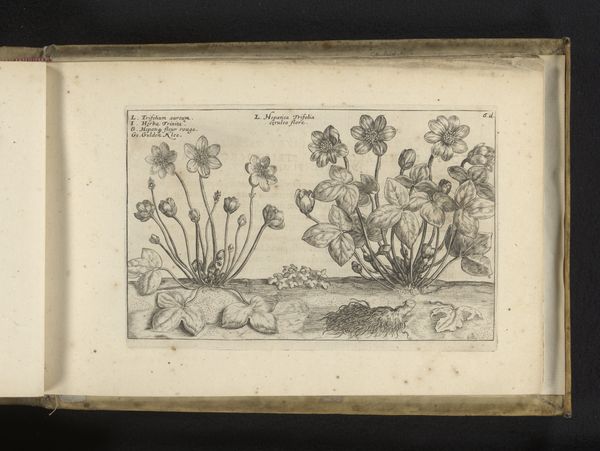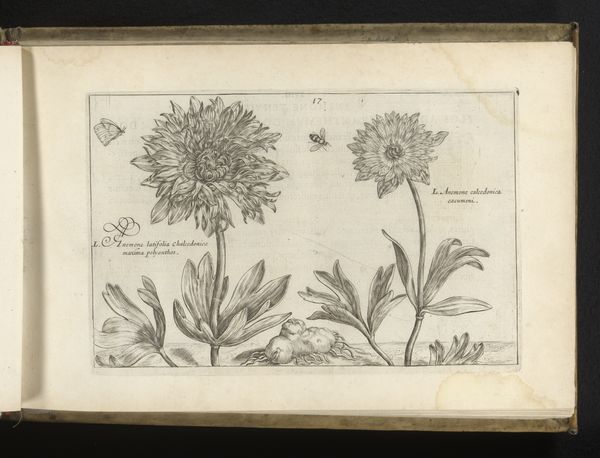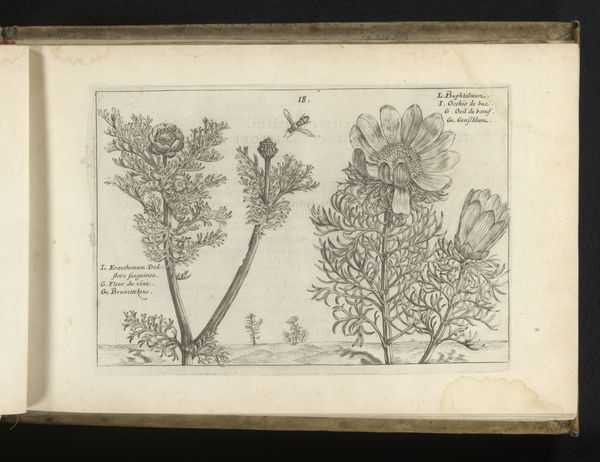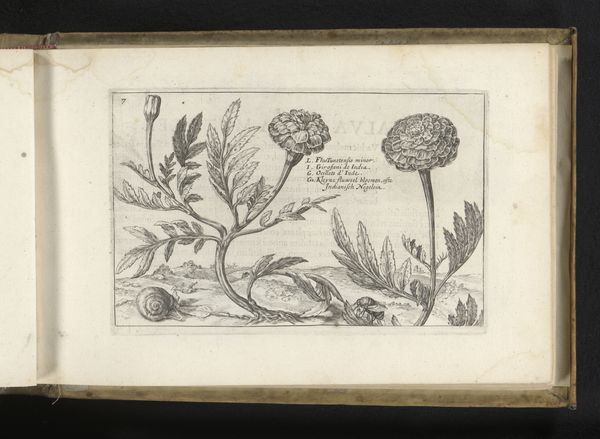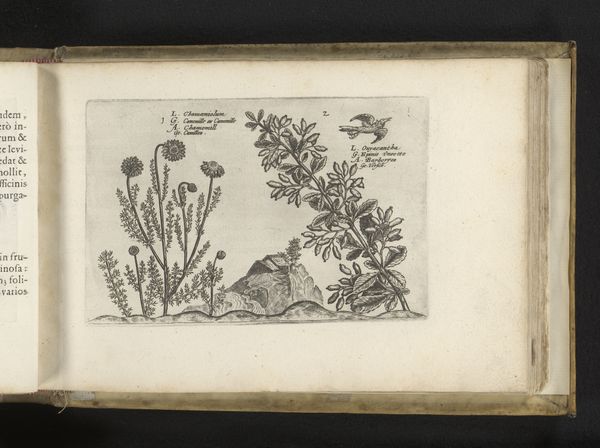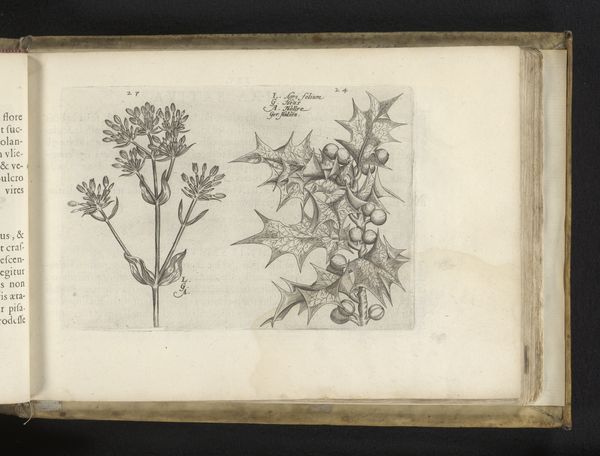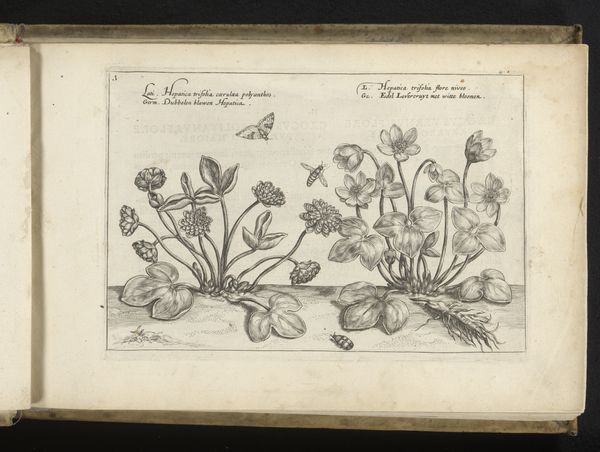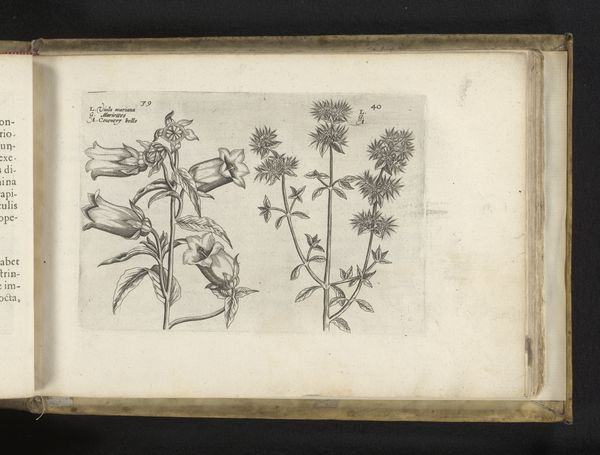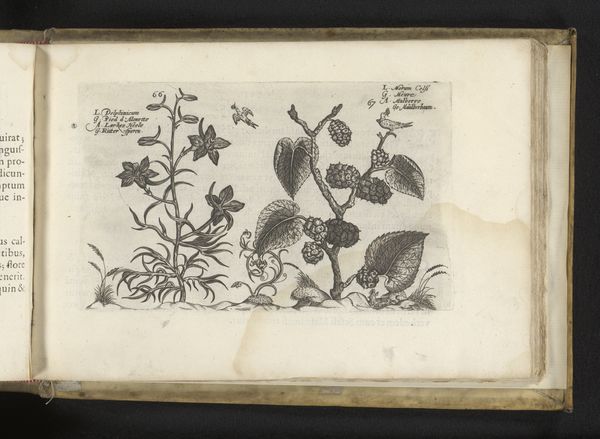
Madeliefje (Bellis perennis) en moederkruid (Tanacetum parthenium) 1617
0:00
0:00
drawing, print, paper, ink, engraving
#
drawing
# print
#
paper
#
ink
#
northern-renaissance
#
engraving
Dimensions: height 133 mm, width 210 mm
Copyright: Rijks Museum: Open Domain
Curator: Our attention is drawn to a striking engraving from 1617 by Crispijn van de Passe the Younger. It’s currently held here at the Rijksmuseum and titled, "Madeliefje (Bellis perennis) en moederkruid (Tanacetum parthenium)," which translates to "Daisy and Feverfew." It’s rendered in ink on paper, displaying a Northern Renaissance sensibility. Editor: The immediate impact is its exquisite detail, wouldn’t you agree? The textures, though monochromatic, feel almost tactile. And there is something delicate and refined about it, a contemplative stillness that’s almost meditative. Curator: Absolutely. Van de Passe situates his botanical subjects within a visual language that blends scientific observation with humanist ideals. This was a time when understanding the natural world was both a philosophical pursuit and a practical necessity. These plants, like so many others illustrated during this era, had known medicinal properties. Editor: So, is it primarily an act of observation then? The almost hyper-realistic portrayal feels like more than simple replication; it transcends objective accuracy. What I’m seeing here is not simply a factual representation, but it has been refined, stylized, using line, tone, and form, to extract the aesthetic core of the plants. It’s as much a testament to the power of artistic rendering as it is a scientific illustration. Curator: It definitely speaks to a shifting cultural context, wouldn’t you agree? These botanical studies frequently acted as visual resources within a period characterized by global trade and colonial expansion. To examine this from an eco-critical lens, how might the portrayal of flora embody colonial ideology and the imposition of European systems? The control and documentation of plants were tied into the broader project of resource management within asymmetrical global power dynamics. Editor: And yet, focusing purely on form and its own compositional logic offers so much—the balance of positive and negative space, the deliberate modulation of light through precisely laid engravings, the implicit movement communicated in the stems… There's an intrinsic harmony within these choices, an almost musical counterpoint between these two different plant specimens. Curator: Indeed, the tensions between historical forces and aesthetic values underscores the layers within it. What emerges from our dialogue is the multifaceted resonance, capturing at once, the botanical precision of the 17th century alongside the aesthetic composition and cultural framework of that moment. Editor: I agree. The convergence of formal analysis and socio-historical perspective provides such enriching insight.
Comments
No comments
Be the first to comment and join the conversation on the ultimate creative platform.
